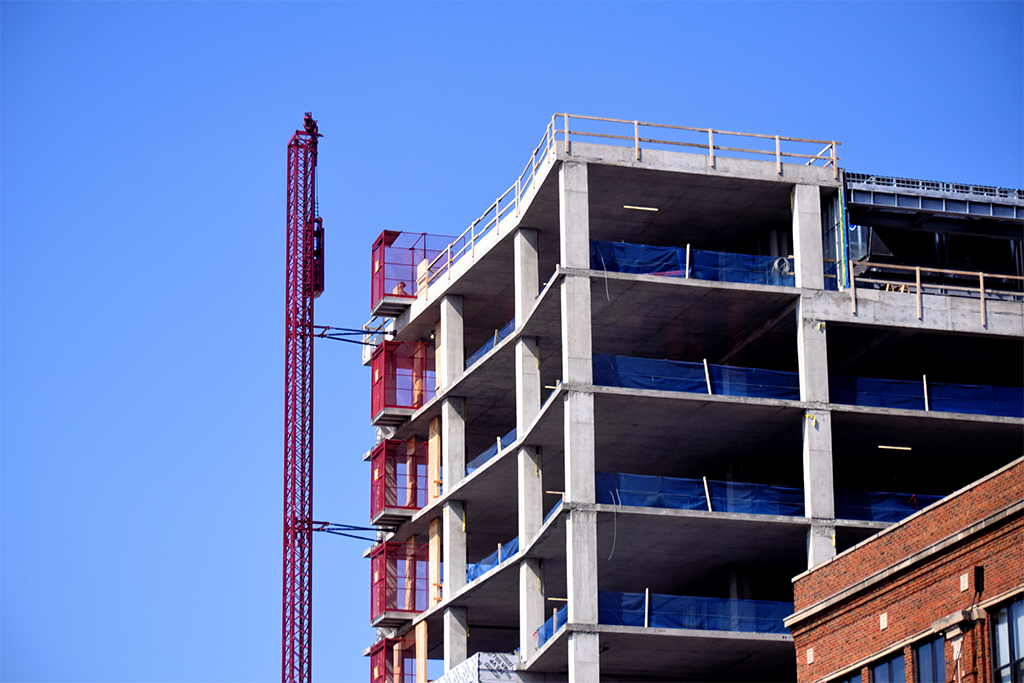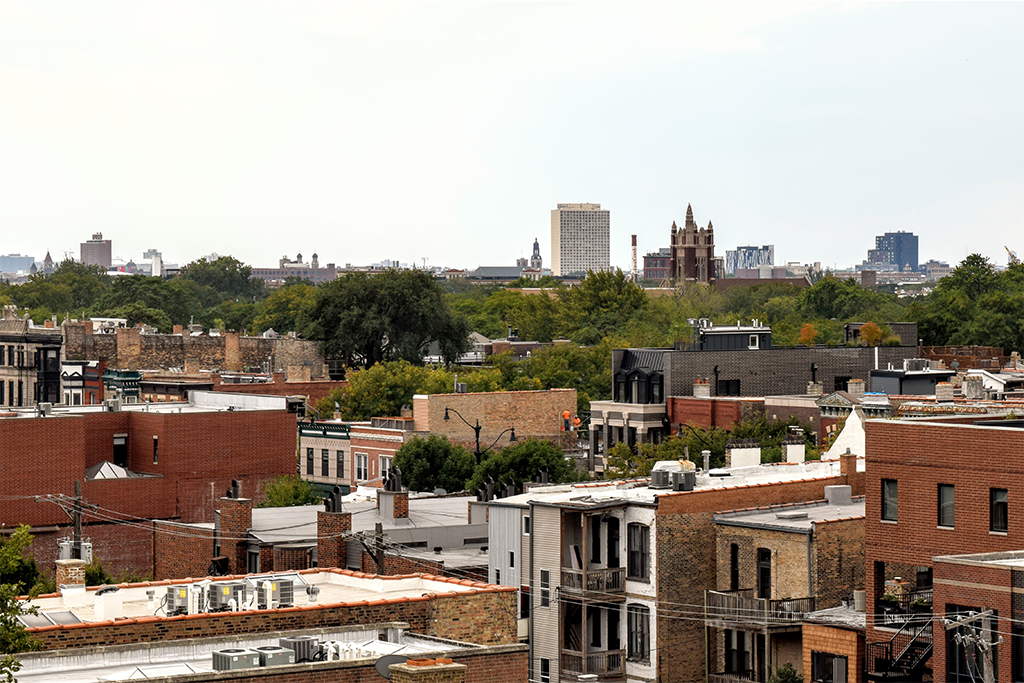John Groene seems to have a story about every property in Humboldt Park—a wealth of knowledge about the owners and transaction histories of so many homes that it has been described as “encyclopedic.”
Members of the IHS staff visited the Humboldt Park field office of Neighborhood Housing Service (NHS), where Groene serves as Neighborhood Director. NHS is a partner in the local Micro Market Recovery Program (MMRP)—a City of Chicago initiative that targets small geographic areas experiencing housing market distress with the goal of creating a critical mass of market stability. Micro Market target areas were chosen by the City for a variety of reasons: existing resources had already been committed there, they house a specific neighborhood asset, or they represent a geographically significant part of the neighborhood.
NHS is a nonprofit neighborhood revitalization organization working to help existing homeowners keep and improve their homes, and to provide financing and education for new homebuyers. In addition to its central headquarters in Wicker Park, NHS has offices in several low- and moderate-income neighborhoods where it works directly with residents, financial institutions, and other partners to help renovate, rehab, and buy homes. Located at 3601 W. Chicago Ave., the West Humboldt Park NHS office sits on the western border of the Humboldt Park MMRP area.
In a brief session in his office, Groene explained MMRP’s role in NHS’s overall strategy within the neighborhood: MMRP provides structure that NHS and partner organizations can use to focus housing and community development resources on a geographically defined set of crucial blocks. In Humboldt Park’s case, the MMRP area is also important because of its proximity to Green Line train stations and the Garfield Park Conservatory, amenities attractive to new families.
At the southeast corner of the MMRP area is the 500 block of North Central Park Avenue, or what Groene refers to as a “super block” because of the concentrated level of effort and subsequent positive outcomes that NHS has helped achieve there. The block has been a particular point of focus because it lies directly north of the Conservatory and serves as an entryway to the neighborhood. It has been a story of success in Humboldt Park: NHS was able to acquire four properties on this block that were in danger of being demolished. NHS has since renovated three of the homes to provide affordable housing for veterans.
In addition to its work on Central Park Avenue, NHS works to build relationships with community members in West Humboldt Park to help existing homeowners acquire resources for home repair and improvement and to refinance or modify their mortgages. NHS and its partners also acquire vacant properties and rehab homes for first-time homebuyers, who they then help to secure financing. Finally, NHS encourages local business development that will make Humboldt Park more attractive to homebuyers and encourage current residents to remain in the neighborhood.
Humboldt Park does face its challenges as a neighborhood but is showing signs of progress. As of the third quarter 2013, 4.7 percent of residential addresses had been vacant for two or more years—one of the highest rates in Chicago. But while 52.6 percent of all property sales were distressed in 2012—meaning that the sale was either a short sale, purchased at foreclosure auction, or purchased out of bank-owned inventory—that share has been on the decline. In 2010, for example, roughly 69 percent of sales were distressed.
The following photos illustrate some of the challenges and successes in the Humboldt Park MMRP area.
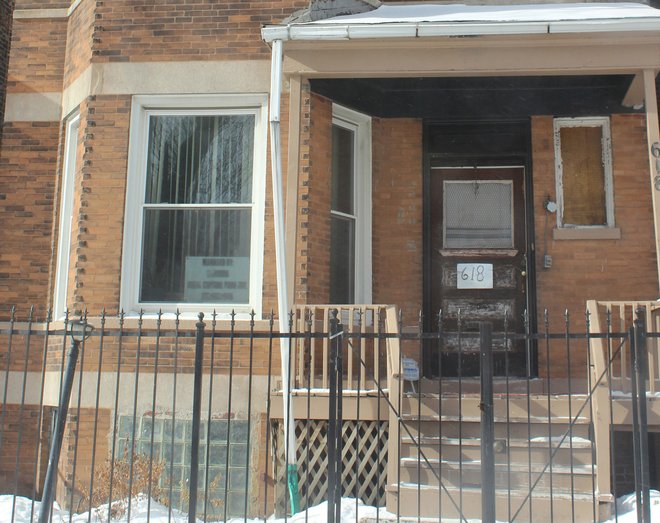 Rental property in need of rehab.
Rental property in need of rehab.
Groene said that "buy and board" investors, those who purchase properties with no intention of rehabbing or, often, not even renting, the property, are currently the biggest hindrance to revitalizing the neighborhood. Even worse, many times they edge out first-time homebuyers with financing that want to live in the property, instead of renting it out.
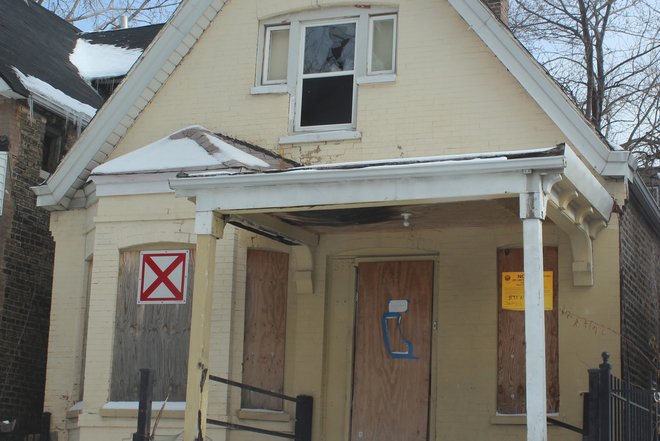 A red 'X' serves as a warning to first responders that a building is vacant and could collapse.
A red 'X' serves as a warning to first responders that a building is vacant and could collapse.
Long-term vacancy increases the likelihood that a building will develop structural problems and become blighted. Red ‘X’s appear on unstable vacant buildings and are part of a citywide initiative to warn emergency personnel not to enter. Such buildings can be found throughout Chicago, particularly in areas hit hardest by foreclosure.
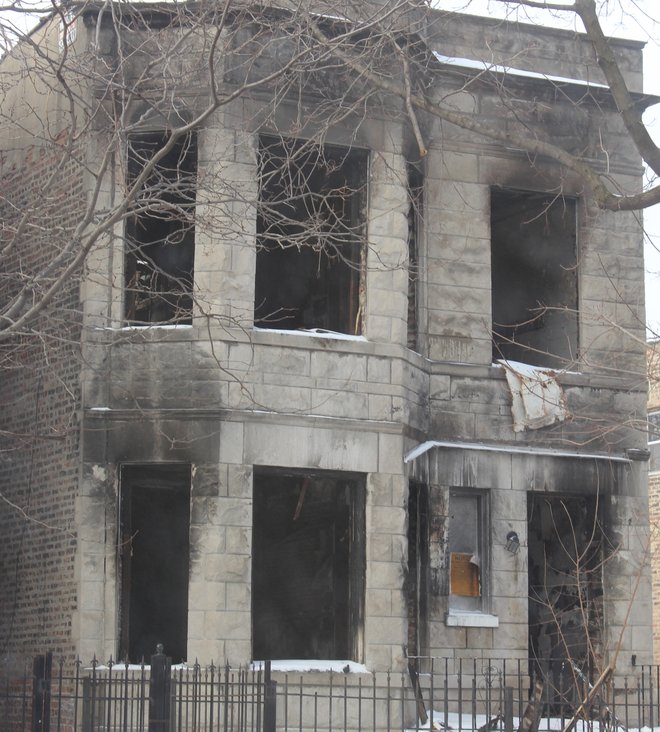 Vacant buildings that aren't properly boarded are at risk to damage caused by squatters.
Vacant buildings that aren't properly boarded are at risk to damage caused by squatters.
Groene said that it would have been possible to rehab and sell this greystone unit to a first-time homebuyer before two fires in the span of one month caused by squatters have left it beyond repair. The building had been frequently boarded with plywood since 2010, but that did not stop it from being broken into. It will now likely have to be demolished.
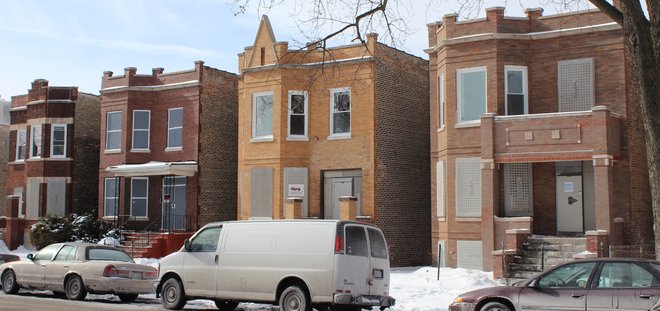 NHS's super block is located at the southern entrance of the neighborhood.
NHS's super block is located at the southern entrance of the neighborhood.
NHS was able to save three out the four houses it acquired on the "super block." One of the properties was too deteriorated to save and had to be demolished. The renovation on the other properties is close to complete, and they will be used to provide affordable rental housing for veterans.
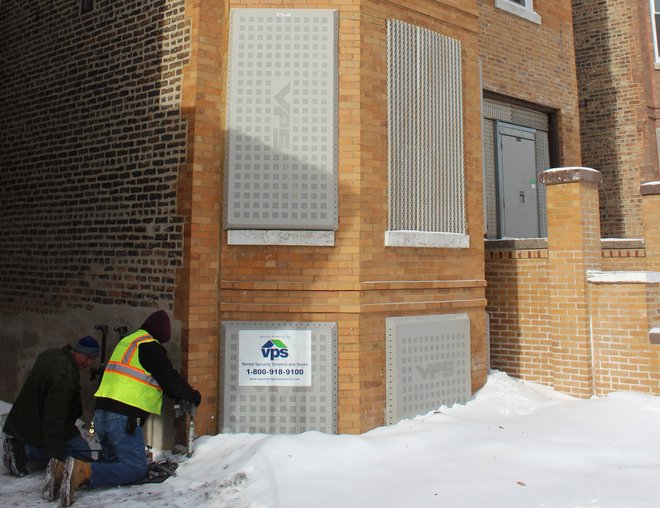 A home on the super block being prepared for occupancy.
A home on the super block being prepared for occupancy.
Workers make improvements to one of the super block homes to prepare it for occupancy. While work is being completed, the house pictured above is fitted with keyed steel doors and steel screens to prevent break-ins and property damage.
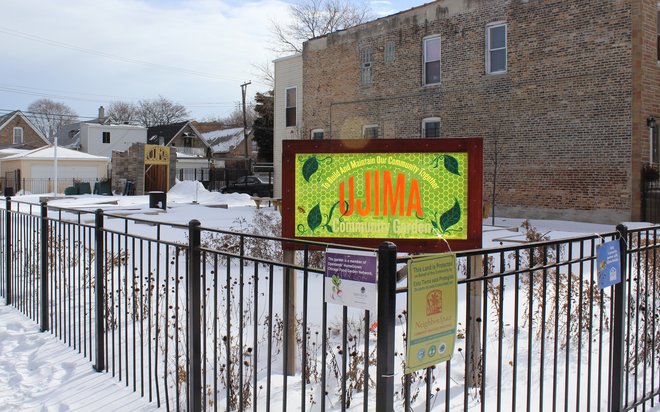 A vacant lot now serving as a community garden on the super block.
A vacant lot now serving as a community garden on the super block.
This community garden at the southeast corner of Central Park Avenue and Ohio Street turned a vacant lot into a protected neighborhood space on the super block. Instances like this are signs of neighborhood revitalization that do not appear in the data but are nonetheless critical to community development.
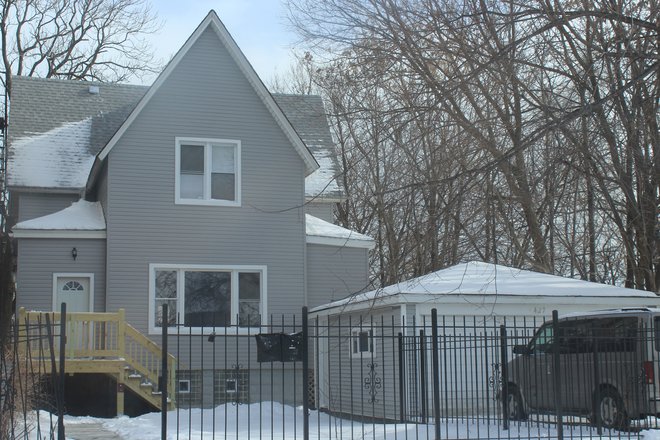 NHS helped a first-time homebuyer secure funds to remodel this Humboldt Park home.
NHS helped a first-time homebuyer secure funds to remodel this Humboldt Park home.
On North Central Park Avenue, a first-time homebuyer was able to buy and remodel this house, augmenting her own investment with incentives leveraged by the Micro-Market Recovery Program and the Chicago Central Park TIF.
To be notified about new blog posts and to give us feedback, follow us on Twitter, like us on Facebook, or join our LinkedIn Group.


